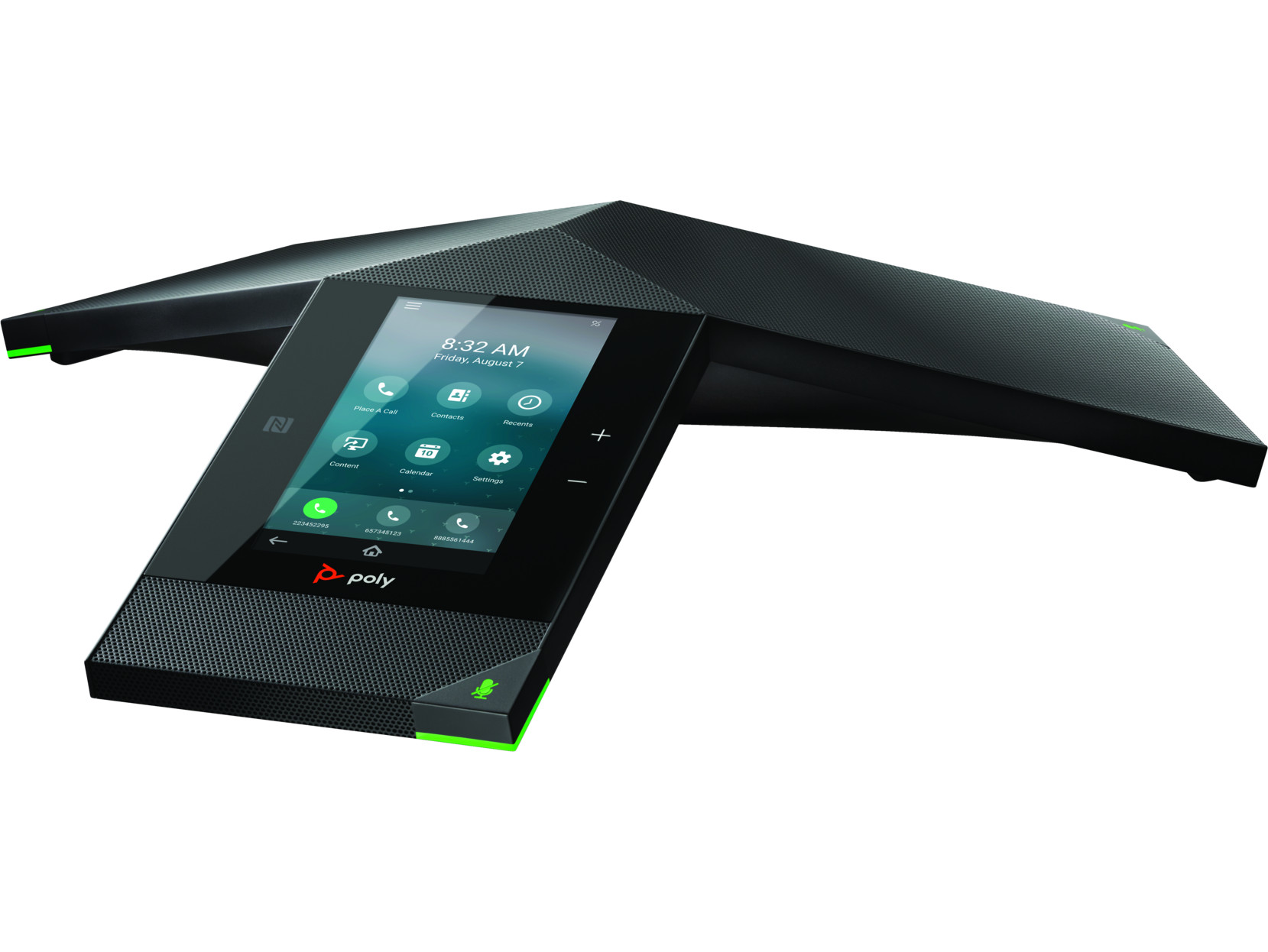















£445.99*
£8.99


Frequently purchased together
Product information
Discover the future of conference communication with the Poly RealPresence Trio 8800 IP conference phone, the first intelligent hub for group collaboration. This revolutionary conference phone combines the highest audio quality with comprehensive functionality and ease of use, ideal for any modern organisation.
Exceptional audio quality
At the heart of the Poly RealPresence Trio 8800 is its exceptional audio performance. With HD Voice technology and Acoustic Clarity, which includes echo cancellation and noise reduction, the device guarantees that every voice is transmitted clearly and naturally. Thanks to the 360-degree microphone range and a recording distance of up to 6 metres, the Trio 8800 is perfect for larger conference rooms.
Versatile connectivity
The Trio 8800 offers a variety of connectivity options to meet the diverse needs of modern businesses. With support for up to three separate lines, it offers flexible connection options via USB, Bluetooth or IP. It is also equipped with an integrated 2-port Gigabit Ethernet circuit that enables fast and secure connections.
User-friendly interface
The device features a gesture-based, multi-touch capacitive touchscreen with a 5-inch colour LCD. Three illuminated mute buttons ensure easy operation during conferences.
Features of the Poly RealPresence Trio 8800:
- Audio quality: HD Voice technology and acoustic clarity for crystal-clear communication.
- Microphone coverage: 360-degree range with a recording distance of up to 6 metres.
- Touch screen: 5-inch colour LCD for easy control.
- Connectivity: USB, Bluetooth, IP and 2-port Gigabit Ethernet switching.
- Content sharing: Supports interactive content sharing.
- Platform integration: Compatible with leading collaboration platforms such as Microsoft Teams.
- Security features: FIPS 140-2 compliant cryptographic modules and TLS v1.2.
- Power supply: Supports PoE and PoE+.
Conclusion
The Poly RealPresence Trio 8800 IP conference phone is more than just a conference phone; it is a comprehensive solution that enables seamless communication and collaboration. Whether for large conference rooms or smaller meeting spaces, the Trio 8800 offers the flexibility and performance that modern organisations need to communicate and collaborate effectively.
Technical data
| Name | Poly RealPrecence Trio 8800 IP conference phone |
|---|---|
| Article number | 1000031034 |
| GTIN/EAN | 0197497506389 |
| Manufacturer SKU | 849A7AA#AC3 |
| Model name | RealPrecence Trio 8800 |
| Brand | Poly |
| Product Type | Telephone conference system |
| Inputs | 1x USB-A , 1x USB-B |
| Product width | 38.3 cm |
| Product height | 7.5 cm |
| Product depth | 33.2 cm |
| Condition | New |
| Warranty | 24 Month |
| Warranty type | Bringin service Service and support information |
Product safety
| Person responsible for the EU |
|---|
| HP Deutschland GmbH |
| Herrenberger Straße 140 |
| 71034 Böblingen |
| Germany |
| firmen.kunden@hp.com |




